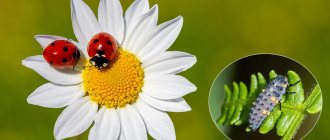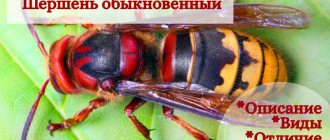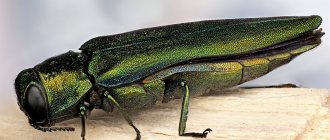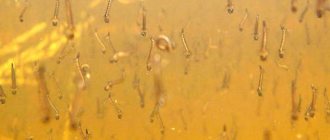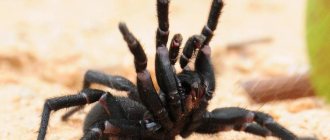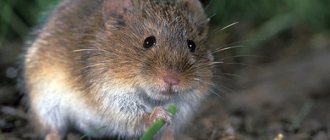Why and how do they get into the house?
In the summer, most often ladybugs accidentally fly into the open windows of an apartment. If you don’t touch them, they will independently find their way out and leave the person’s home.
With the onset of autumn the situation changes. The anticipation of cold weather causes these insects to gather together. Having formed a cluster, they look for a place where they can overwinter. In the wild, shelter most often consists of leaf cover on the ground, crevices in tree trunks, and hollow stumps. An interesting fact is that it is the accumulation that helps the beetles maintain the air temperature in the winter shelter higher than in the environment.
In the apartment
It is more difficult to find such places in cities, so in the fall ladybugs flock to houses. They mostly hide in cracks on balconies, window frames, and attics. But in the hot summer, when there is a lot of food and it is possible to breed offspring more than once, as the temperature drops, a massive attack on human habitation begins. Up to a hundred bugs can fly into an open window in just an hour.
Reproduction
The beetle begins to procreate consciously - only having a solid supply of food. The female “places” future offspring close to aphid colonies, laying up to 400 eggs at the bottom of the leaves. If an insect satisfies its hunger with scale insects and scale insects, it will lay its eggs under the shell of these insects.
After seven days, dark, elongated larvae emerge. From the moment of birth, they have an excellent appetite: each larva is capable of absorbing up to 1000 aphids per day.
After about a month (give or take a week), the larva pupates. A semicircular pupa of orange or black color clings tightly to the bark or leaves of garden trees. In the pupal phase, the bugs “mature” to an adult state from one to one and a half months, after which they slowly crawl out of the old “skin”, dry out their soft wings and change color.
In a year, coccinellids can give birth to one, and sometimes two generations of their “children”.
Methods to combat ladybugs at home
These brightly colored insects cannot cause any harm to humans, but they cause considerable inconvenience. And if a couple or three can be taken outside or released through a window, then the question of how to get rid of ladybugs in the house, when there are dozens of them, becomes relevant. Experts recommend several methods.
Physical
Zoologists do not recommend fighting ladybugs by removing them with your hands, as they can secrete a certain amount of a special liquid - milk, a red aggressive liquid formed in the spores of the limbs, as a warning about their inedibility. Yellow stains on hands and clothes are difficult to wash off.
- In the fall, the bugs become lethargic and therefore can be swept away with brooms and taken outside the threshold.
- Sometimes a vacuum cleaner is used to remove ladybugs from the apartment. A stocking is pulled over the suction hose so that a small bag is formed inside the tube. When you turn on the unit, this is where all the bugs will be. All that remains is to release them.
- Using a light trap helps catch insects in a dark place. The unit is sold in stores. The bugs, attracted by the bright light, fly off and end up in a special container, from where they cannot escape on their own. We must not forget to periodically let them out into the street so that they do not die.
In cold weather, it is better not to throw a ladybug onto the ground; it may not survive. A more acceptable option would be a barn or attic. There she will find somewhere to hide until spring.
Biological
Biological remedies for ladybugs that are commercially available are not suitable for use in the home. Fitoverm and Iskra-Bio act on insects with the help of microorganisms. Although they are absolutely safe for humans, they are still used only in the garden.
You can remove bugs from your home using seasonings, the smell of which ladybugs do not like. To do this, use bay leaf or cloves. It is enough to place them around the rooms in open containers, and the insects will begin to leave the house. Mint works the same way.
Chemical
Of the chemicals used to combat ladybugs, it is best to use barrier agents. Preventive measures are always more effective. Pyrethrins or pyrethroids with a long shelf life are suitable for this. They are sprayed in those places where bugs enter the house. The substance begins to act after contact with an insect. After a short time, the ladybug will die. When choosing a product, you need to pay attention to whether it can be used in a residential area. If you don’t want to dilute the powder, you can use insecticidal chalk.
Pesticide
When ladybugs have already moved into the apartment, it is impossible to do without aerosol pesticides. You need to poison bugs only with those where the instructions for use clearly state that it kills these insects. As a rule, broad-spectrum drugs do not have the desired effect on ladybugs.
Before treating the premises, you need to take care of personal protective equipment and remove animals and children from the house. When finished, dead insects should not be left behind. They must be collected and thrown away in a sealed bag.
Folk remedies
To attract other individuals, ladybugs secrete special pheromones. This happens not only during the mating period, but also before hibernation. Thus, they call on their relatives to create a cluster. The smell of pheromones produced in special glands can spread over 500 meters. Therefore, many folk recipes are aimed at destroying this aroma. Other methods are also used:
- Menthol or camphor . You need to mix one of the products with water, pour it into a container and use a spray bottle to spray all the places where ladybugs are found. In addition to destroying the smell of pheromones, this will also repel bugs.
- also seems to work . Moreover, if it hits an insect directly, it dies.
- Since ladybugs have almost no enemies in the wild, they are afraid of little. Water traps have proven themselves well . Pour water into a small container, such as a bowl, and add liquid soap. The dishes are placed in a lighted place so that the glare attracts bugs. In winter, you can use a table lamp. Trying to sit on the surface of the water, the ladybug drowns.
- Boric acid is also lethal on contact. It is poured into places where insects can crawl.
- Food grade diatomaceous earth is also used for the same purpose . When a beetle tries to climb over a surface sprinkled with flour, the sharp edges of the diatomaceous earth particles dig into the exoskeleton, thus compromising its integrity. This leads to dehydration of the body, and the ladybug dies.
Artificial development
We said above how a ladybug develops in nature: it lays larvae, which constantly feed and grow. But the wild is not the only place where they are born. The fact is that in some countries these cute bugs are grown in special laboratories. They do this in order to combat insect pests in the fields. For example, this is still done in Japan.
For the full development of these creatures, they are fed wasp larvae. This significantly increases the beetles' fertility (almost 10 times). After this, the ladybugs are released into the fields. As we have already noted, the purpose of this procedure is to destroy pests. These hardworking insects immediately get to work. In addition, gardeners note that a ladybug in the garden is also an indispensable assistant in the fight against various pests. All this makes scarlet beetles useful for agriculture.
Preventive measures
As a rule, the invasion of ladybirds into human homes lasts about two weeks. It is at this time that it is important to prevent them from entering the house. To do this you need:
- Seal cracks in window frames and door frames not only from the inside, but also from the outside. This is necessary so that insects do not find shelter there for the winter.
- Use a mosquito net. If the outside is covered with bugs, then before removing it, spray it with a repellent spray. You can prepare it yourself. To do this, you need to infuse the peel of any citrus fruit in water. You can also use diluted juice.
- Seal the window frames with adhesive tape.
- During the formation of a cluster of ladybugs, seal the ventilation holes with gauze or mosquito netting.
- In the private sector or near the windows of the first floor, you can plant chrysanthemums. Bugs do not like this plant and fly around it.
Growing at home
Not all insects in natural conditions can withstand the cold. It's the same with bugs living in an artificial environment. Therefore, if you decide to start growing them, get pets in the spring. The chances that your insects will be healthy and viable will increase. Moreover, with the arrival of the first warm days, the activity of beetles is not yet high, they stay in groups, and it is not difficult to collect them.
A house for ladybugs can be a plastic terrarium with a lid, a plywood box with slots for air circulation, or a wooden cage with a covered top.
Dry leaves, small branches or wood shavings should be placed at the bottom of the box. In such conditions, the insects will be comfortable, they can live for several months, overwinter, and begin to mate in the spring.
How birds sleep
Birds that spend the night not in tree branches practically sleep standing up. Why don't they fall to the ground? Birds have a long tendon, about the same length as the bird's leg, connected to a strong muscle. When the bird sits, the tendon stretches, acts on the fingers, and they compress, covering the branch. This mechanism is very reliable. It happens that dead birds are found on tree branches: they do not fall, because even after death their fingers continue to tightly grip the branch.
Many birds sleep with their heads tucked under their wings and their feathers raised to protect them from the cold. Herons and storks often sleep standing on one leg. Some parrots in South America sleep in an original way. They hang upside down, clinging to a branch with one leg. Some swifts sleep in a large ball.
Bird sleep is associated with some special metabolic issues. In birds, metabolism is very intense. The normal temperature of birds is 42 C, that is, the temperature that a person experiences only with a serious illness. During sleep, chemical processes in the birds' bodies slow down, and body temperature drops to 20 C.
Many water birds sleep "float". Often ducks and swans are captured by ice: while they sleep, the water around them freezes. Seagulls also sleep on the water. They claim that they can fall asleep for a short time during flight. The ability to sleep in flight is also attributed to birds that can make long flights, such as albatrosses. This may be true, but albatrosses undoubtedly spend most of their sleep on the water. Some animals sleep underwater.
Nutrition
In spring and autumn, wet or dried raisins and pieces of cotton wool dipped in sweet water are placed in the boxes. Place wet moss (sphagnum) on the bottom.
It is very important to comply with these requirements, since moisture is no less important for them than food, and if both are not enough, they will die
In spring or early summer, there are few or no aphids at all, so ladybugs get all the nutrients they need for life from cotton wool moistened with sweet water. It, along with moistened cubes of refined sugar, is laid out on the floor of the box. After waking up, moisture is vital for insects. Therefore, every day, you need to spray water from a spray bottle in the box. Cows are given pollen from the first flowering plants, for example, coltsfoot. Insects love to feast on flowering willow. A jar with such a bouquet standing in water can be placed in a box or cage. In three to four days the bouquet will need to be replaced with a new one.
It is very difficult to feed the beetles without them flying out, especially if the air temperature is high. If possible, move the cage to a room with a temperature no higher than 15-17C. The light should not fall on the house, only then will it be difficult for the beetles to find their way to freedom.
If the air temperature rises to 20C or higher, the beetles will begin to show increased activity, fly continuously, refuse to eat, and fall. To prevent this, with the onset of hot weather, the cages are taken to a cold place, with a temperature no higher than 15C. You will notice how active insects will become calmer, their appetite will return, they will stop flying chaotically and begin mating. Choose a secluded corner where there will be partial shade most of the day, and place the box with bugs there.
Where to begin
Before you start implementing your plans, you need to consider many factors and think things through carefully. Including the following question: where to put the products? Ladybugs, in large quantities, can be sold to greenhouse farmers, gardeners, and agronomists, who will send them to the fields. You can sell little red bugs via the Internet; those who want to purchase such a product will not have to wait long. Thus, you can sell both collected and grown bugs.
How to calculate the volume of goods? Insects are counted not by quantity, but by weight, since they are mobile, and this is not easy to do. In our country, one ladybug costs from one ruble.
Undoubtedly, in order for the cultivation of any living beings to be successful, and therefore profitable, knowledge is needed. It is necessary to collect as much information as possible about the behavior and reproduction of insects, but we will talk about this a little later.
Biological drugs
Biological product Fitoverm.
Biological insecticide Bitoxibacillin.
If epilyachna is detected at the end of the growing season, it is advisable to use biological preparations. Fitoverm can be used 3 times per season with an interval of 5 to 15 days. Potatoes are sprayed with Bitoxibacillin as needed at intervals of at least a week. Processing is carried out in calm and dry weather. Potatoes treated with biological preparations can be eaten 2 days after the last procedure.
